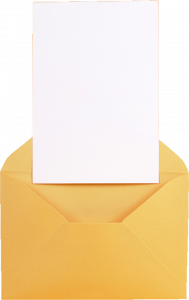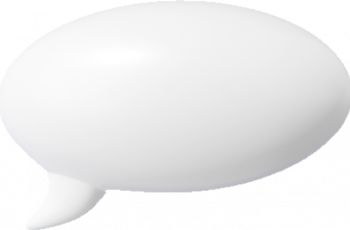
Actions To Take When You Discover An Infringement

If you believe your artworks are being used by other parties to make NFTs for sale, you should take actions to protect your hard works and efforts. If you are not sure where to start, then you should definitely check out the content below.

Step 1: Investigate
The very first thing that you should do is to conduct an investigation on the infringement as thorough as possible. No matter which approach you want to use to settle the issue, it is always beneficial to have more information. Here are some examples that you should find out before proceeding with the infringement case:
- Details of the infringer (e.g. legal full name, email) and the infringing works (e.g. URL of the infringing piece))
- Proof of Copyright Ownership
- Evidence for substantial similarity between original work and infringing work

Step 2: Decide on Approaches
There are mainly two popular methods of settling copyright infringement in Hong Kong:
Issuing Cease and Desist Letter/Warning Letter
Issuing Cease and Desist Letter is simply writing a notice to the infringer demanding that he/she should remove the infringing content and stop further infringing activity.
Pros:
- Most cost-efficient
- Relative short time span in solving the issue if the infringer is willing to corporate
Cons:
- Not legally binding
- Infringer may not give positive response
- Could alert the recipient, driving them to take action and destroy evidence
Taking Civil Litigation
Taking civil litigation means filing the infringement complaint in the Court.
Pros:
- Forced corporation
- Allow monetary claim from infringer
Cons:
- Longer time span, generally need 15-30 months to settle the infringement case
- Relatively costly compared with issuing Cease and Desist letter
If you feel the damage caused by the infringing work is not very serious to you, you may will to send a warning letter. You can continue reading Step 3 for further details about the Cease and Desist letter.
If you have sufficient evidence and believe the damage is large, you could consider starting a civil litigation. You can press the following button to move to the relevant section.

Step 3: Issuing Cease and Desist Letter
What To Be Aware Of Before Preparing C&D Letter
Before preparing the C&D letter, please make sure you have:
- Preserved Key Infringement Evidences
- Prepared for Filing or Response to Lawsuits
- Developed Countermeasures for Different Responses
What To Include In C&D Letter
In a Cease and Desist Letter, you should include the following items:
- A physical or electronic signature of the copyright holder
- Identification of the specific copyrighted work(s) claimed to have been infringed
- Identification of the material that is to be removed or access to which is to be disabled, and information reasonably sufficient to permit the service provider to locate the material (e.g. URL)
- The deadline that the recipient must stop the activity by
- Result or penalty to the recipient if they do not stop such activity
- A statement that the complaining party has a good faith belief that use of the material in the manner complained of is not authorized
- A statement that the information in the notification is accurate, and under penalty of perjury, that the complaining party is authorized to act on behalf of the copyright holder
We understand that writing a Cease and Desist Letter from scratch would be hard. Therefore, we have prepared a chatbot that could help you write the letter. Try it out by clicking the button below!
How To Send C&D Letter
Direct Delivery is the most common way to deliver a Cease and Desist letter, which means sending the Cease and Desist letter directly to the specific recipient. Some common methods of direct delivery include:
- via registered mail, certified mail
- via email or fax through an attorney
No matter which method you choose, you should make sure to keep evidence confirming that the letter is with the recipient.
Another way is Public Delivery, which means publicizing the letter to specific recipients or the general parties. This method, however, will potential bring about the risk of commercial defamation or libel if you do not have strong evidences in the copyright infringement.
Common Responses and Corresponding Follow-up Measures
The common responses of Cease and Desist letters are as follows.
- No response: This is a very common response as the Cease and Desist letter is not legally binding. In this case, you may take active follow-up actions, either by reaching the infringer via other methods or directly initiate a litigation.
- Admitting infringement and agreeing to undertake rectification: This is the most desirable response of Cease and Desist letter as you can now solve the infringement issue.
- Denying the existence of infringing acts, but is willing to have further negotiations to prevent potential risks: Although the infringer denies his current actions involve infringement, it reflects the infringer is aware of the potential risks and has a cooperative attitude. You can move on with the negotiations.
- Taking pre-emptive actions by filing a declaration of non-infringement case: To prepare for this case, we advise you to be prepared for a lawsuit before sending the Cease and Desist letter.



Step 4: Taking Civil Litigation
If, unfortunately, the Cease and Desist Letter does not address the problem and you have sufficient evidence to prove the infringement, you may wish to start a civil action.
First, you should know which court you should issue proceedings to which court. In Hong Kong, the District Court has jurisdiction to hear passing or copyright infringement cases up to a value of HK$3,000,000 (USD385,000), while the High Court has unlimited jurisdiction for all IP claims.
After that, you should start the civil action by a Writ of Summons. A Writ of Summons is a formal document to commence a personal injury action. Sample of Writ of Summons could be downloaded from the Judiciary website. For Writ of Summons to the High Court, please click here. For Writ of Summons to the District Court, please click here. The Writ of Summons has to be accompanied by the Statement of Claim, which is a legal document that list out the material facts about the case, the basis for the claim and the remedies that you would like to have.
When the Writ and the Statement of Claim have been served upon the infringer, he/she will have 14 days to file an Acknowledgment of Service to indicate whether he/she wants to oppose your claim or not.
If the infringer does not oppose your claim, that is great and you may settle the infringement case and monetary claim with the infringer under the Court’s instructions. If the infringer opposes your claim, then, he/she will file a defence and you have to file a reply. In this situation, the case may have to proceed to trial.
For more detailed procedures of civil action, please click here.
Be Aware Of Copyright Issues Associated With Generative AI

With the development of Generative AI, the AI system can now generate very sophisticated art pieces based on the large amount of training art pieces in its database. However, this leads to the question about who owns the generated art piece.
Currently, there is no copyright dispute regarding AI-generated content in Hong Kong. However, there was a case in the UK where the court affirmed that an AI system cannot be a patent owner. It is likely that Hong Kong will follow the practice of UK.
However, not recognizing AI system as a patent owner does not guarantee a sure win over the copyright infringement case of AI-generated contents. There is a case in the US, in which a group of visual artists accused Stability AI, Midjourney and DeviantArt of misusing their copyrighted work in the companies’ generative AI system. At the end, the judge dismissed most of the claims, and it marked the loss of the first battle of copyright infringement between artists and Gen AI. The judge claimed that the “substantial similarity” requirement could not be found in the case. In Hong Kong, the Copyright Ordinance indicates that infringement is constituted only when the accused infringing work passes the substantiality test. Therefore, if you would like to accuse a copyright infringement case of an AI-generated content, you should prepare enough evidences to proof the substantial similarity between your copyrighted work and the generated content.
Reference:
DMCA takedown notice. Georgetown University Library. (n.d.). https://library.georgetown.edu/copyright/dmca-takedown
Everything you should know before sending a cease & desist letter in … (n.d.). https://www.kwm.com/cn/en/insights/latest-thinking/safety-guidelines-for-sending-lawyer-s-letter-and-warning-letter.html
Hong Kong Customs and Excise Department – Intellectual Property Rights Protection. (n.d.). https://www.customs.gov.hk/en/service-enforcement-information/intellectual-property-rights-protection/index.html
Sample Court forms. Resource Centre for Unrepresented Litigants – RC Service. (n.d.). https://rcul.judiciary.hk/rc/eng/sform.jsp#:~:text=The%20purpose%20of%20a%20statement,remedies%20which%20the%20plaintiff%20seeks.)
Yu, A. (n.d.). Hong Kong SAR: Ip Enforcement Manual. Rouse. https://rouse.com/insights/news/2022/hong-kong-sar-ip-enforcement-manual
Disclaimer: Nothing in this website is intended to be nor should be constructed as legal advice. This is an educational project created by students. Please consult your lawyer for legal advice.